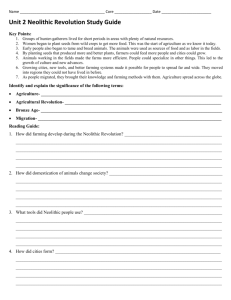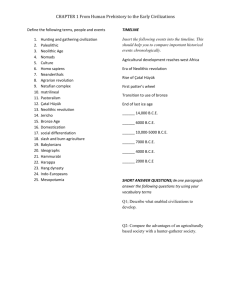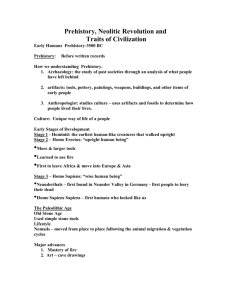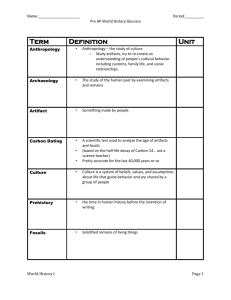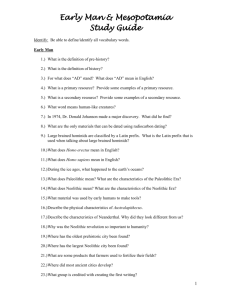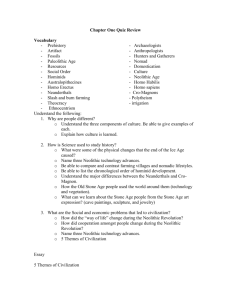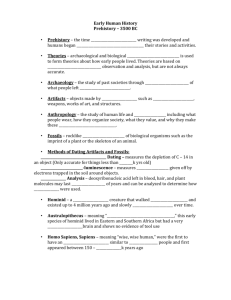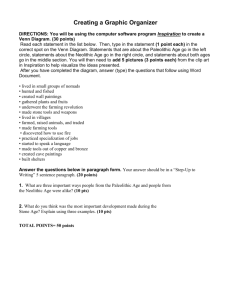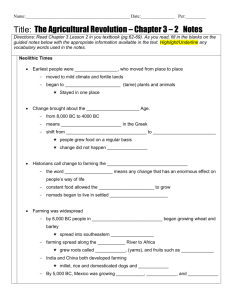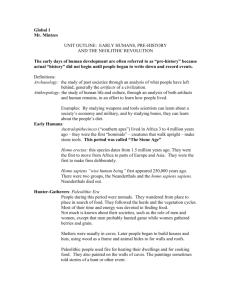Who discovered the bones of the earliest known human at
advertisement
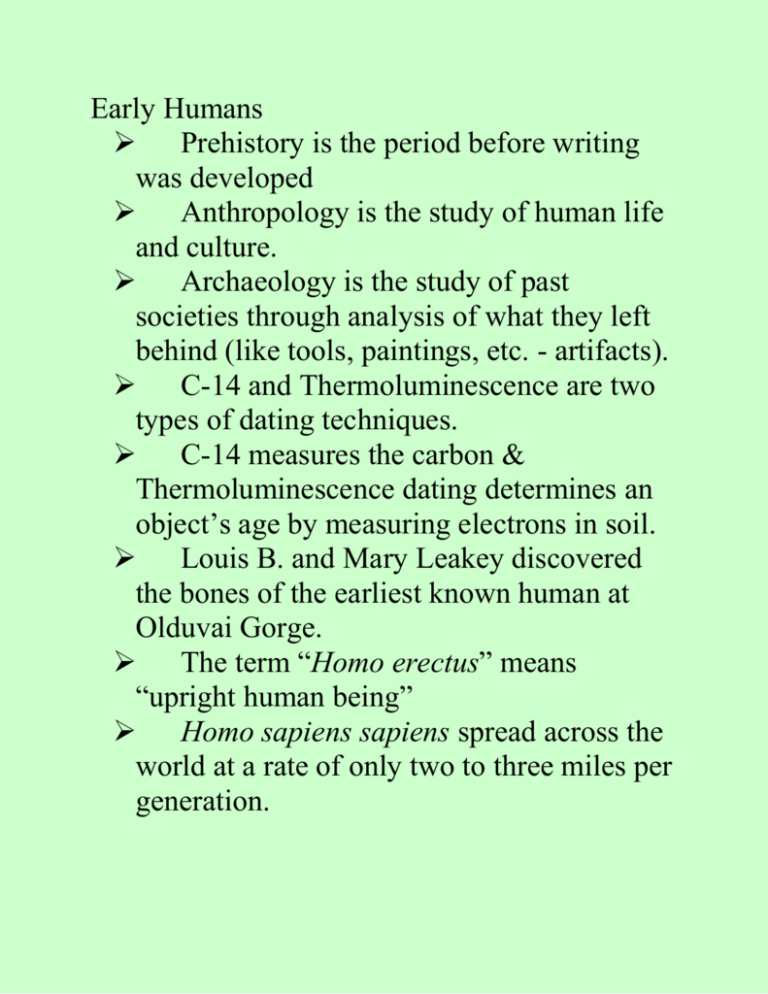
Early Humans Prehistory is the period before writing was developed Anthropology is the study of human life and culture. Archaeology is the study of past societies through analysis of what they left behind (like tools, paintings, etc. - artifacts). C-14 and Thermoluminescence are two types of dating techniques. C-14 measures the carbon & Thermoluminescence dating determines an object’s age by measuring electrons in soil. Louis B. and Mary Leakey discovered the bones of the earliest known human at Olduvai Gorge. The term “Homo erectus” means “upright human being” Homo sapiens sapiens spread across the world at a rate of only two to three miles per generation. All human beings today belong to the Homo sapiens sapiens subspecies of human being. Paleolithic peoples were nomads because they had no choice but to follow animal migrations and vegetation cycles. The Paleolithic Age is the period in which humans used simple stone tools. Neolithic Revolution Neolithic Revolution changes & consequences The Neolithic Age is sometimes called the New Stone Age. The ability to acquire food on a regular basis meant humans could give up their nomadic ways of life and begin to live in settled communities. The Neolithic Revolution can best be described as the growing of crops and the taming of food-producing animals by early humans. The real change in the Neolithic Revolution was the shift from hunting and gathering to systematic agriculture. The movement toward systematic agriculture led people to settle in one area. This, in turn, led to the development of farming villages, causing people to see the need to build houses for protection and other structures for the storage of goods. The trading of goods caused people to specialize in certain crafts, and gave rise to artisans. Tools became more refined and food plants began to be cultivated. Food surpluses in the Neolithic farming village of Çatal Hüyük made it possible for people to do things other than farming. Men became more active in farming and herding animals, while women stayed at home to care for the children, weave cloth, and perform other jobs that required staying in one place. As men took on the responsibility for obtaining food and protecting the settlement, they came to play a more dominant role. This basic pattern would remain until our own times. Historians have identified the basic characteristics of civilizations as cities, governments, religion, social structure, writing, and art.


